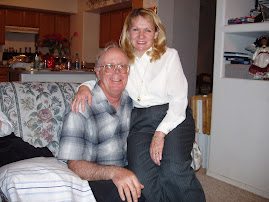Tuesday, September 4, 2007
BUOYANCY
MATERIALS
Modeling clay
Dishpan
Water
PROCEDURE
1. Take a piece of modeling clay and split it into 2 identically sized pieces
2. Take one of the pieces and roll it into a ball
3. Take the other piece and smooth it out into a flat piece, like a little pancake
4. Fill dishpan with water
5. Ask child, “Do you think these pieces of clay will sink or float?”
6. Place both pieces of clay into tub of water at the same time. Observe.
7. Have child communicate observations.
EXPLANATION
If the total area of the object that makes contact with the water is large enough, the object floats. The object must make room for its own volume by pushing aside, or “displacing” an equal amount of liquid. The object is exerting a downward force on the water, and the water is exerting an upward force of the object. The solid body floats when it has displaced just enough water to equal its own weight. This is “buoyancy.” An object immersed in a liquid is buoyed upward by a force equal to the weight of the liquid displaced by that object (Archimedes’ principle.)
Modeling clay
Dishpan
Water
PROCEDURE
1. Take a piece of modeling clay and split it into 2 identically sized pieces
2. Take one of the pieces and roll it into a ball
3. Take the other piece and smooth it out into a flat piece, like a little pancake
4. Fill dishpan with water
5. Ask child, “Do you think these pieces of clay will sink or float?”
6. Place both pieces of clay into tub of water at the same time. Observe.
7. Have child communicate observations.
EXPLANATION
If the total area of the object that makes contact with the water is large enough, the object floats. The object must make room for its own volume by pushing aside, or “displacing” an equal amount of liquid. The object is exerting a downward force on the water, and the water is exerting an upward force of the object. The solid body floats when it has displaced just enough water to equal its own weight. This is “buoyancy.” An object immersed in a liquid is buoyed upward by a force equal to the weight of the liquid displaced by that object (Archimedes’ principle.)
Subscribe to:
Post Comments (Atom)




I wonder if the pancake-shaped clay were re-formed into a shallow boat shape after the intitial experiment, would it still float while more weight is added inside? Would it not only continue to float, but support a cargo as well? Just an idea of something else to try.
ReplyDeleteif the clay is made into a U shape like a boat then though the area will be reduced a bit but it will allow less water to enter ..... (because if water enters model will becum heavy and sink)and hence it will be able to take more weight lesser than the weight of water which might hav entered if the shape was flat!!! samjhe.....
ReplyDeleteif the clay is made into a U shape like a boat then though the area will be reduced a bit but it will allow less water to enter ..... (because if water enters model will becum heavy and sink)and hence it will be able to take more weight lesser than the weight of water which might hav entered if the shape was flat!!! samjhe.....
ReplyDeleteRADHIKA
good........
ReplyDelete